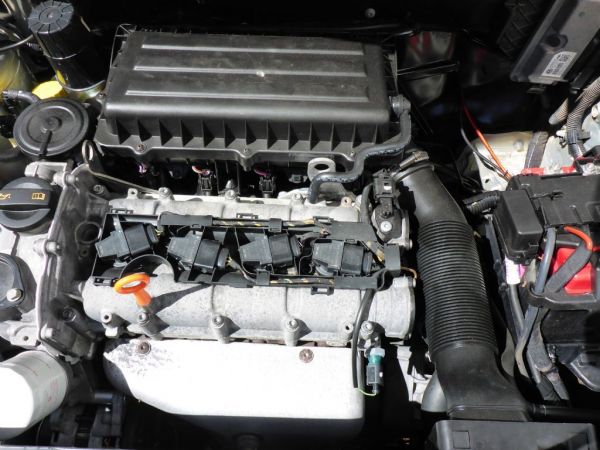Exactly How a Clp Engine Can Improve Performance in Various Industries
The advent of CLP engines notes a considerable change in operational performance across numerous industries, driven by their ability to enhance gas intake and minimize downtime. As organizations progressively focus on sustainability along with efficiency, the role of CLP engines comes to be even more important.
Review of CLP Engines
CLP engines, or Continual Fluid Propellant engines, represent a significant development in propulsion technology, especially for area applications. These engines use a continuous feed system that permits the continual expulsion of propellant, causing enhanced performance and efficiency contrasted to conventional solid or hybrid propulsion systems. By keeping a continuous flow of fluid propellant, CLP engines can accomplish more specific thrust control, which is important for maneuvering spacecraft in numerous objective scenarios.
The layout of CLP engines integrates advanced products and innovative gas monitoring systems. clp engine. This causes minimized weight and enhanced integrity, necessary factors for long-duration room missions. In addition, the constant operation lessens the danger of burning instability, a typical obstacle in conventional rocket engines.

Advantages in Production
The manufacturing of Constant Liquid Propellant (CLP) engines presents a number of significant advantages that enhance both efficiency and cost-effectiveness. One of the key advantages is the structured production procedure, which reduces the intricacy connected with typical propulsion systems. By making use of liquid propellant, producers can achieve greater accuracy in engine performance, leading to optimized power outcome and minimized waste.
Furthermore, CLP engines facilitate a greater level of modularity, enabling easier assimilation into various production lines. This flexibility can dramatically decrease lead times and enhance total operational flexibility. The usage of CLP technology likewise tends to lessen the requirement for extensive upkeep because of less moving parts, which equates into lowered downtime and operational prices.

Applications in Logistics
Leveraging Continual Fluid Propellant (CLP) engines in logistics uses substantial benefits in functional performance and integrity. These engines give a durable remedy for numerous transportation needs, enabling the seamless movement of items across vast ranges. The inherent design of CLP engines permits regular power result, which converts into smoother and much more predictable transportation timetables.
Among the crucial applications of CLP engines in logistics is in durable freight transport, where they can drive both ground and airborne automobiles. Their capability to preserve high performance under differing tons problems makes sure that delivery timelines are met, thereby boosting consumer satisfaction. In addition, CLP engines can be integrated right into automated logistics systems, promoting real-time tracking and optimizing course preparation.
Moreover, the sturdiness of CLP engines reduces upkeep downtime, enabling logistics companies to optimize their operational capacities. This is especially advantageous in warehousing operations, where performance in handling and delivering products is vital. As logistics remains to advance, the combination of CLP engines stands for a forward-thinking method that not just enhances performance yet likewise sustains the market's expanding demands for integrity and rate.
Effect On Energy Efficiency
Exactly How do Continual Liquid Propellant (CLP) engines improve power effectiveness in transport? CLP engines utilize a constant circulation of liquid gas, maximizing combustion procedures and keeping a stable drive result. This design lessens power losses related to typical combustion engines, where fuel shipment can differ and lead to ineffectiveness.
The continual operation of CLP engines permits a much more reliable thermal cycle, causing higher specific impulse compared to conventional engines. clp engine. This converts to minimized investigate this site fuel consumption for the exact same quantity of work done, considerably decreasing functional costs across various transportation markets, consisting of aeronautics and maritime sectors
Moreover, the capacity of CLP engines to keep optimum efficiency under differing load conditions reduces the need for frequent acceleration and deceleration, further improving fuel efficiency. Improved energy a fantastic read efficiency not only adds to set you back financial savings yet additionally leads to reduce greenhouse gas discharges, lining up with worldwide sustainability goals.
Future Trends and Innovations
Emerging developments in Continuous Liquid Propellant (CLP) engine technology assurance to change the landscape of transport effectiveness and sustainability. As sectors pivot towards greener options, CLP engines stand at the leading edge, integrating innovative products and layout methods that improve performance while minimizing ecological influence.
Among one of the most appealing trends is the fostering of hybrid systems that combine CLP engines with renewable resource sources. This harmony can maximize fuel usage and decrease emissions, straightening with worldwide sustainability goals. Moreover, innovations in computational fluid characteristics (CFD) are promoting the style of even more aerodynamically reliable engines, bring about minimized drag and improved gas effectiveness.
Moreover, the growth of smart surveillance systems is set to boost operational performances. These systems leverage information analytics and IoT technology to enhance engine performance in real-time, making sure that the engines run within their most efficient specifications.
As research continues to discover alternative propellant formulas-- such as biofuels and artificial gas-- the future of CLP engines looks encouraging. By utilizing these technologies, sectors can not only enhance their performance but likewise add dramatically to a cleaner, much more lasting future in transportation.
Final Thought
In verdict, CLP engines stand for a considerable innovation in efficiency across several industries. Their ability to optimize fuel usage and decrease operational costs, incorporated with a continual feed system, enhances power outcome and functional integrity. The combination of advanced materials and fewer moving components decreases upkeep requirements, while placement with sustainability goals positions CLP engines basics as a critical technology for the future. Proceeded advancement in this field assures additional renovations in efficiency and ecological performance.